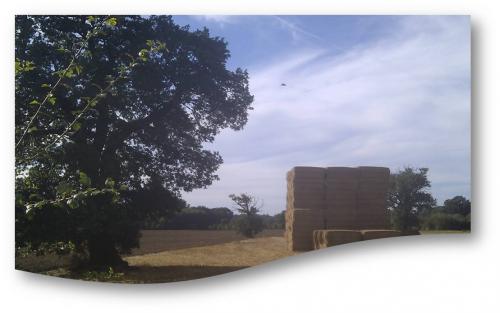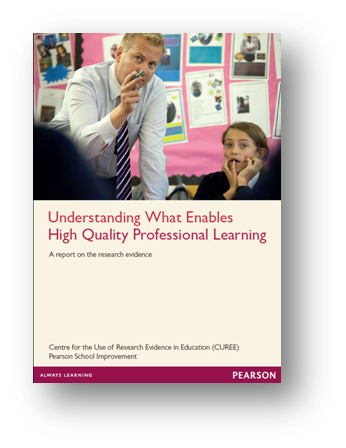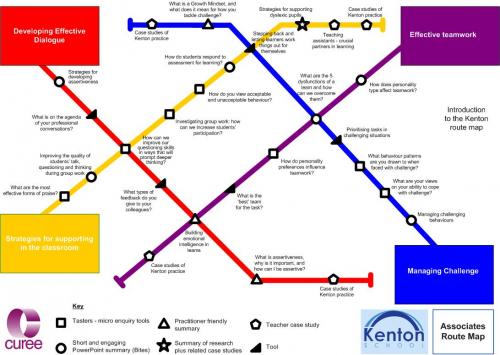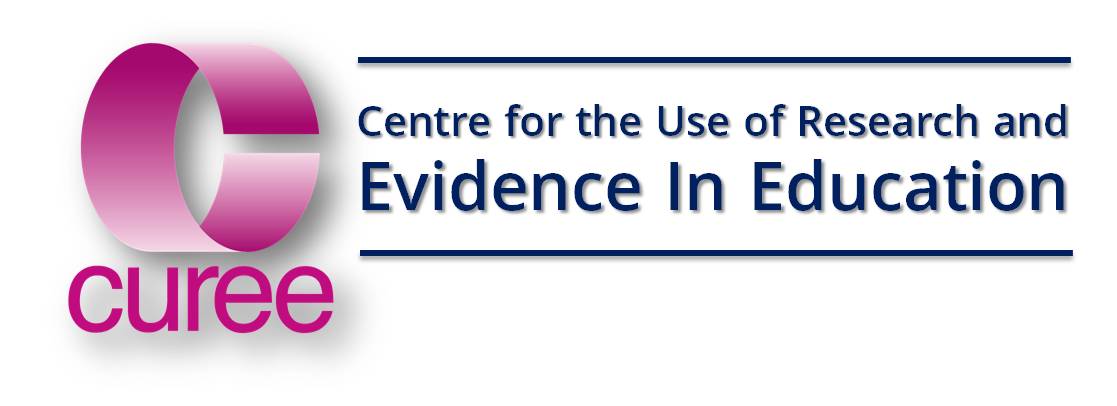
September 2012 |
Harnessing Knowledge to Practice |

Contents
- Autumn Blog
- Hot off the press
- Creative learning through music
- Autumn Programme
- PM and PD
- Literacy, questioning, active learning
- “Come up and see me”
- Professionalism for Associates at Kenton
- In other news
Philippa's Autumn Blog
The Olympics gave us a glorious close to a very unglorious summer but I guess the cultural and sporting triumphs will long be remembered as rather special. New academic years are always exciting too, and the sunshine cheers us along even if it would have been nice to have more of it during the break. But with new years come new challenges and 2012-13 promises lots of them.
Some challenges arise from extraordinary announcements from the end of last year and over the summer about QTS and GCSEs, to name but two. The latest revelations about pegging GCSE results to predictions based on key stage 2 results beggars belief. Economic and social conditions put pressure on families coping - or not coping - with ever scarcer resources and increasing child poverty. More constructively, we face the constant challenge of continuing improvement and lifelong learning - and we can all sign up to that. So I make no apology for the strong focus on professional development and learning in this newsletter.
The new Ofsted Framework represents a challenge to be sure, but the inclusion of 16 different references to continuing professional development within it contains, for once, the seeds of a virtuous circle. The research about leadership contributions to student success is absolutely clear; a combination of investigating and supporting the learning needs and activities of colleagues to secure depth in professional learning and modelling effective work based professional learning is twice as effective as anything else leaders do (click here for our summary or here for an FE specific version). So school and college leaders can start the new year confident that, properly structured, investing time and attention in CPD can directly affect learner achievement, improve the quality of teaching and learning and help prepare you for success against the new college and school inspection frameworks.
As our SKEIN evaluation service and our Sauce for the Goose and Performance Review workshops show, approaching the learning of your staff as if they were your class can make a real difference. So exploring the hopes and anxieties of learners at the start of the year could provide a great springboard for phase, departmental or staff room discussions about what everyone hopes and expects to contribute to professional learning over the next three terms.
Philippa Cordingley - Chief Executive
HOT OFF THE PRESS – New Report on High Quality Professional Learning
 What forms of professional development and learning actually improve things for students? What do practitioners do in their professional learning if it’s effective? How is this different for school leaders? New this week is CUREE’s latest analysis of the evidence, about both leaders’ and teachers’ learning, commissioned and published by Pearson. This analysis provides some of the conceptual underpinning of their new models for supporting school improvement. So, what do you think is the same and what is different about leaders’ and teachers’ learning? Compare your view with the evidence by looking at the report here
What forms of professional development and learning actually improve things for students? What do practitioners do in their professional learning if it’s effective? How is this different for school leaders? New this week is CUREE’s latest analysis of the evidence, about both leaders’ and teachers’ learning, commissioned and published by Pearson. This analysis provides some of the conceptual underpinning of their new models for supporting school improvement. So, what do you think is the same and what is different about leaders’ and teachers’ learning? Compare your view with the evidence by looking at the report here
Creative approaches to inclusive learning through music
During our work with the Sage Gateshead we were fascinated to by many creative approaches that the music practitioners use to make their sessions truly inclusive and ensure deep learning and participation. Here we unpack some examples - one from work with very young children and another with post-16 learners.
Headlines to tempt you to read more include:
- the different ways early years music practitioners involved children in decision making and encouraged them to contribute their ideas
- how practitioners identified and worked with content and media that easily related to young people’s lives to draw in disengaged learners.
Inclusive learning environment: examples of strategies from the Sage Gateshead
1. Working with young children (EY and primary settings)
Involving children in decision making and encouraging them to contribute their ideas was one of the strategies used by the music practitioners.
The practitioner provided many opportunities for the children to contribute ideas which she incorporated into the sessions. For example, after singing a song of her choice, she asked a child what he would like them to sing. He suggested the Batman theme tune. She then proceeded to play around with the tune, inviting the children to copy her. First she sang the tune using the words ‘Dinner, Dinner, Dinner, Dinner …’ which the children echoed. Then she repeated the exercise using the words ‘Nana, Nana, Nana, Nana …’ and asked the children to vote on which they thought sounded best. They then sang the tune together again using the ‘best’ sound, adding the word Batman at the end, first as a high note, then as a low note. They sang the tune one more time, but much faster.
Frequently, the practitioner invited the children to contribute ideas for different words or actions they could use in a song. For a song called ‘Come dance with me’, the children suggested, for example, spinning on one leg and a ‘caterpillar wiggle’. All the children then performed the action at the appropriate point of the song.
2. Working with post-16 learners
Personalising learning, providing young people with opportunities to explore their personal musical interests and making use of content and media that easily relate to young people’s lives were amongst the approaches used by the practitioners working with disengaged learners.
The Friday Night Project was established in response to a local need to help young people engaged in anti-social and criminal activity onto more positive pathways. The project provides a route of entry into other programmes for disaffected young people. The team does this by offering facilities for them to experiment with graffiti art and music production, mostly rap and hip hop. The sessions take place at the Arches, just next to the Sage building, which provides wall space for graffiti activities, and also holds a music studio within a portable classroom.
Friday Night Project sessions are informal and operate on a drop-in basis, so young people who attend come and go at their convenience. Once there, they have freedom to use the range of facilities available, and receive support and guidance from members of staff. The activities they engage in include:
- using the mixing and recording equipment to produce their own music
- producing graffiti art
- accessing social media and websites on the site’s computers.
At the end of each session staff hold a debrief with the young people, discussing whether activities were helpful, and deciding where to take their learning the following week.
If you would like to know more about the music practitioners’ approaches to securing inclusivity and engagement in learning, please contact Natalia Buckler.
Autumn Term CPDL programme
Many of us will still be using tried and tested strategies for working out our students’ starting points to lay a foundation of positive relationships for effective learning with a new cohort of students. Yet how many of us are paying the same attention to our own and our colleagues’ learning needs? Whilst there are clearly differences between staff and student learning (not least being paid to do the job and accountable for it!), if you are in a leadership position why not, as Philippa suggests above, think of the staff as your class? How does the school’s CPD programme meet their varying needs? Are there any gaps in the provision? Is it differentiated sufficiently? Take a look at our Autumn term programme and see how we can help you meet your colleagues’ particular professional learning needs in school.
We are also delighted that our CPD partnership with Coventry LA is continuing to develop: the range of workshops hosted by Coventry local authority (but open to all) at their Training Centre are shown in blue in the Programme table. This is proving to be a very effective model for supporting CPD delivery which might work in your area. Drop Lisa Bradbury a line (lisa.bradbury@curee.co.uk) if you work for a local authority, academy chain or similar network to explore the possibilities.
Linking Performance Management and Professional Development – and other issues from the front line
Teacher initiative (or ‘agency’ as the research puts it) and the effectiveness of school approaches to understanding and taking account of staff needs are just a couple of the areas we explore with schools as part of our SKEIN service. Each school’s strategies are unique yet, since many of the challenges they are facing are similar, we are now beginning to uncover important patterns in how schools across the country organise CPD.
Here we offer a preliminary view of some of the findings beginning to emerge including examples of good practice and early warning signals. For instance, we were bowled over by Castle School’s approach to evaluating not just colleagues’ performance but also their confidence as learners. But we were also surprised to see how rarely a school’s PM system was directly connected from the processes which drove CPD planning. You can use this vignette and our presentation to this year’s BERA conference to explore how you think your school or college compares with emerging trends
In our first cross-school analysis, we looked at just over 400 staff survey [1]responses across ten schools nationally.
Teacher agency
In our work with the Skein schools we’ve encountered many examples of good and innovative practice, including true commitment to encouraging teacher agency and making professional development relevant to all staff, e.g.:
- In Castle School each year SLT consider deeply, not just performance of every colleague, but also their confidence and capacity to learn to create a springboard for the next year’s CPD offer
- In KEVI annual staff voice sessions use sophisticated processes for involving all staff in creating CPD priorities and identifying what they can offer to them as a springboard for their CPD offer.
Only a small number of staff (8%) reported not being involved in identifying their own development needs and shaping their development processes.
But there was another part to the story. Nearly a third of staff responding to our survey indicated that out of the last 5 CPD opportunities they did not select a single one.
Embedding high leverage approaches and performance review
Although most schools (over 75%) cited coaching as a key approach to CPD in group leadership interviews, only 26% said they were involved in coaching regularly and 52 % of survey respondents said they were involved in coaching at most once a year. In some schools coaching was firmly embedded in performance review conversations. But half of the survey respondents who are involved in coaching conversations do not use them or performance review meetings to identify or agree forthcoming development opportunities. This indicates how often coaching and performance reviews are used inefficiently: despite the investment of time and resources, schools and their staff often realise only a fraction of the potential benefits of these important professional development processes.
Whole school CPD sessions
The challenge
Despite the challenges in ensuring that a whole school CPD session is differentiated to meet the varying starting points of staff, about three quarters of the SKEIN schools still use these as a means of ensuring whole school priorities are met. Over 50% of the school practitioners reported that the bulk of the CPD they attended targeted whole school priorities and was not aimed at them personally. Yet, nearly 20% of practitioners found whole school sessions largely irrelevant and another 50% could only sometimes link them to their practice. This was, understandably, less true in primary school than secondary schools although even there whole schools sessions seem to be challenging environments for personalised professional learning.
Examples of good practice
We are therefore on the look out for innovative ways of ensuring that whole school sessions enable personalised learning. In this context, Kenton School’s use of an Open Space approach focusing on closing the gap received far and away the most positive spontaneous mentions in a wide range of data collection contexts, and Castle school’s notion of providing hosts to guide people around their annual market place of good practice to ensure learning is personalised was another interesting approach highlighted by several respondents. If you have good ideas for personalising whole school CPD session do let us know so we can celebrate and disseminate best practice.
By looking across our data and helping our Skein schools to learn from each other we hope to provide them with additional support, complementing highly personalised guidance and recommendations they receive as part of the service. If you would like to join the Skein community and see how our in-depth diagnostic can help your school CPD move forward, please contact Natalia Buckler natalia.buckler@curee.co.uk)
[1] The SKEIN process includes a staff survey but collects a much wider range of data too. This initial analysis is based only on the survey data
Developing literacy across the curriculum, effective questioning and active learning…
… are just some of the priority areas schools identified for the 5 route maps they commissioned over the summer. We created maps which proved the schools (and a college) with user friendly versions of international evidence relating to their own priorities and practical micro-enquiry tools. The route maps involve pairs and small groups of teachers in developing research informed practice and connecting their own and their students’ learning.
David Burrows, Headteacher at Ladygrove Park Primary School, has already put the resources to use and commented:
“Many thanks for the research readings you assembled for us. They were a really useful resource for the joint staff meeting we arranged with our partner school and helped to raise the quality of the conversations ready to launch the joint lesson study.”
In partnership with the schools and colleges we have kick-started discussions on the effectiveness of current practice through in-school or college CPD sessions and/or set up staff co-coaching partnerships so that colleagues can support each other in investigating the evidence about ‘what works’ and using this to move forward their practice. To see a partially enabled route map click here. If you would like to discuss how a route map or route map line could support your development priorities this term, please contact Rebecca Raybould
“Come up and see me sometime”
This being the Autumn, the season of mists and a lot of conferences, we at CUREE venture out into schools and colleges and to some of the events being put on by others. If you are going to any of the following why not pop over and let us know what you are up to:
NAHT Education Conference |
Manchester 19th October |
Workshop |
NAHT Education Conference |
London 16th November |
Workshop |
NCSL New Heads’ Conference |
Business Design Centre, London 15-16th November |
Exhibition Stand |
This list changes all the time so have a look at the Events page on our website for the up-to-date list.
Professionalism and Progress for Kenton School Associates
 We have noticed from our SKEIN evaluations that many schools struggle to find ways of offering support staff a progressive structure of CPD. So we were delighted to work with Kenton School, Newcastle on a cutting-edge route map for their Associate staff. The school is committed to ensuring that everyone (including teaching assistants, technicians and members of the accounts team) has high quality learning experiences that help them focus their work on supporting student achievement. We used a survey to identify the burning issues for associates. These included developing effective team work and dialogue, managing challenge and supporting classroom learning. We developed bespoke tools and resources to help associates explore the key issues and develop their practice. For example, resources highlighted key strategies for interacting assertively with colleagues and for building emotional intelligence in teams. The resources were enthusiastically welcomed at a start of year CPD session. Next stop is evaluating their impact. If you would like an informal chat about how a bespoke route map could support the professional development of all of the staff in your school or college please contact Rebecca Raybould.
We have noticed from our SKEIN evaluations that many schools struggle to find ways of offering support staff a progressive structure of CPD. So we were delighted to work with Kenton School, Newcastle on a cutting-edge route map for their Associate staff. The school is committed to ensuring that everyone (including teaching assistants, technicians and members of the accounts team) has high quality learning experiences that help them focus their work on supporting student achievement. We used a survey to identify the burning issues for associates. These included developing effective team work and dialogue, managing challenge and supporting classroom learning. We developed bespoke tools and resources to help associates explore the key issues and develop their practice. For example, resources highlighted key strategies for interacting assertively with colleagues and for building emotional intelligence in teams. The resources were enthusiastically welcomed at a start of year CPD session. Next stop is evaluating their impact. If you would like an informal chat about how a bespoke route map could support the professional development of all of the staff in your school or college please contact Rebecca Raybould.
..and in other news
SAGE Handbook of Mentoring and CoachingSAGE have recently published a new Handbook of Mentoring and Coaching in Education which aims to be a leading source of theories and practical applications about mentoring and coaching. Philippa Cordingley and Natalia Buckler contributed a chapter Mentoring and Coaching for Teachers’ CPD which explores the links between mentoring and coaching alongside the broader evidence base about effective CPD. CUREE’s work in establishing the evidence base around coaching and the resulting National Framework for Mentoring and Coaching features regularly. The handbook is a timely reminder of the way in which “coaching bridges the gap between training and the application of new learning in classrooms” benefiting both teachers and pupils alike. Click here to try out a couple of practical tools from CUREE’s research based Effective Mentoring and Coaching resources |
Opening MindsCUREE was pleased to deliver its Opening Minds action research report to RSA this week. The project explored ways the competence-based curriculum contributes to outstanding teaching and learning, along with best approaches to assessment. The Lead Practitioners at five Opening Minds training schools led the action research, supported by CUREE’s Associate Principal Researcher, Colin Isham. Teachers had the opportunity to reflect strategically on their practice in the light of Ofsted’s new outstanding lesson criteria, and identify professional development needs. As one teacher put it, ‘although it was a lot of work, we really enjoyed it. It also happened to fit beautifully timing wise with internal discussions here about moving from good to outstanding.'
Let us know if you would like to know more about this kind of work |
Books…Philippa has completed a book chapter analysing what engaging with research and evidence has to offer school improvement and governance in complex education systems around the world for OECD – due out in Spring 2013 – but you can get a hint of this via her presentation at a conference in Warsaw this April |
… and more booksCoaching is widely used (with both students and staff) in schools and also features in a number of vocational areas (e.g. music, drama sport, cooking). City and Guilds’ Centre for Skills Development is attempting pull this range of experience together in a guide for FE practitioners. CUREE has contributed a chapter exploring current practice in vocational education and relating it to the wider knowledge base. The book is being finalised now and we’ll let you know when it is available. |
